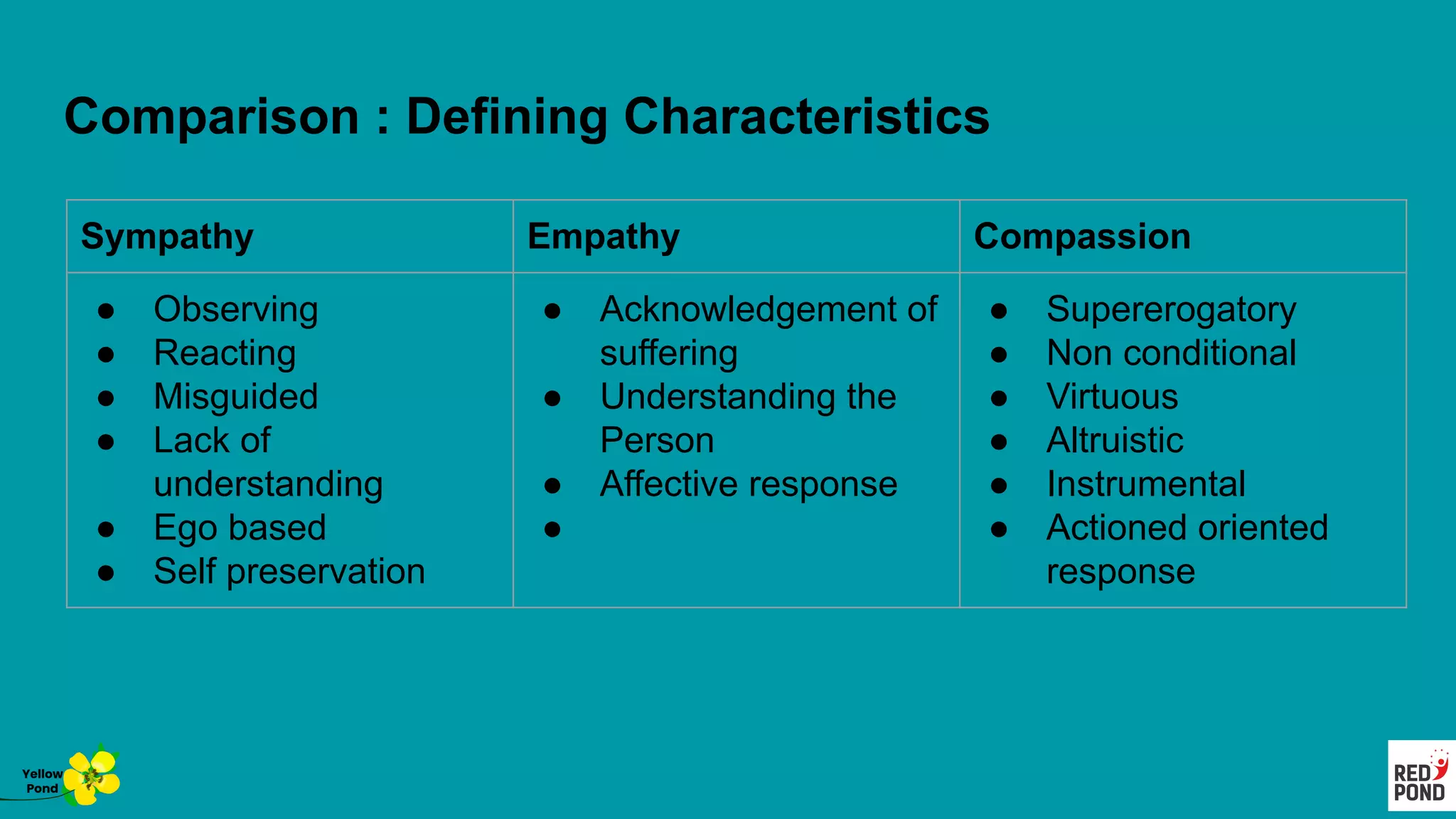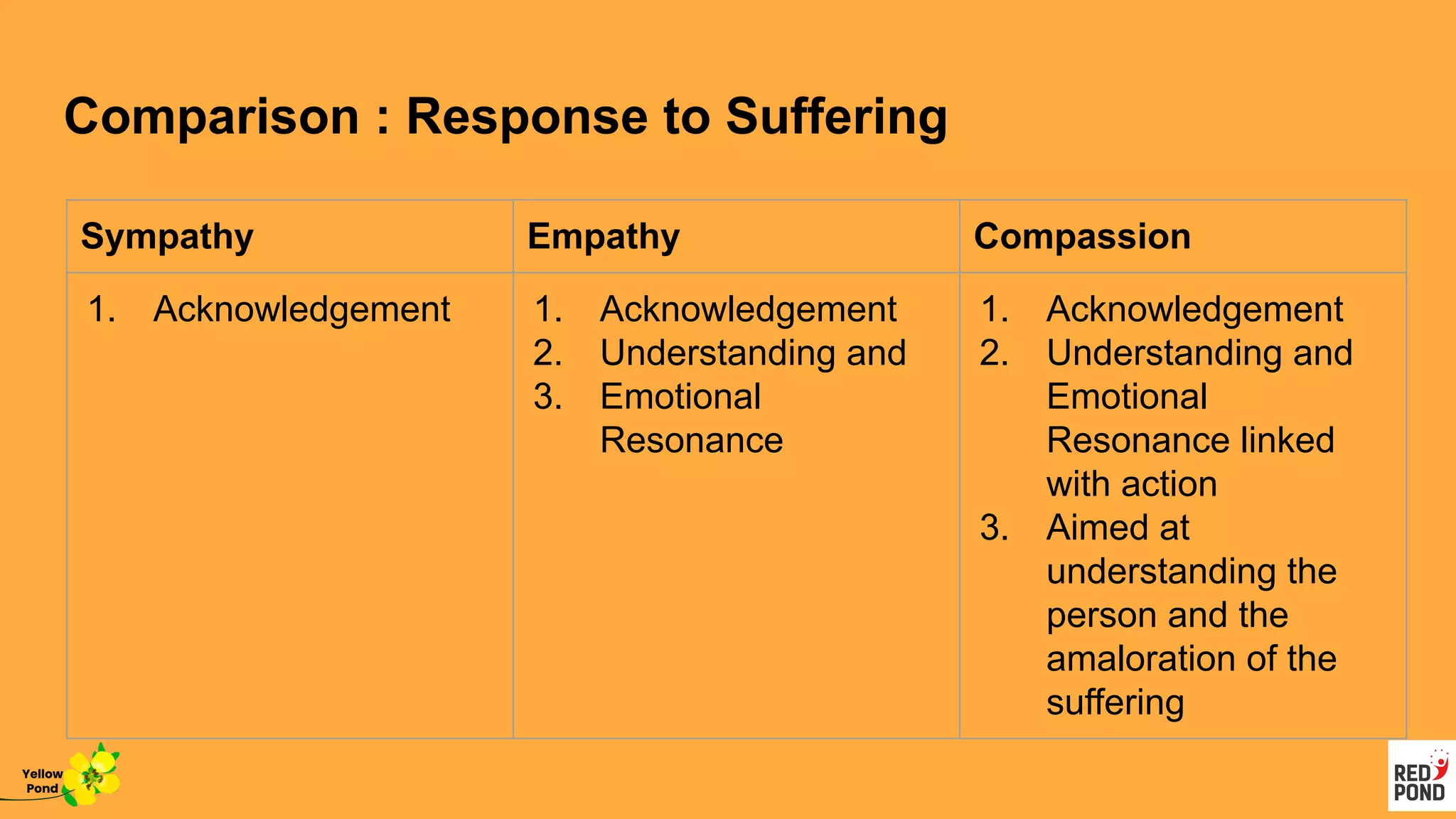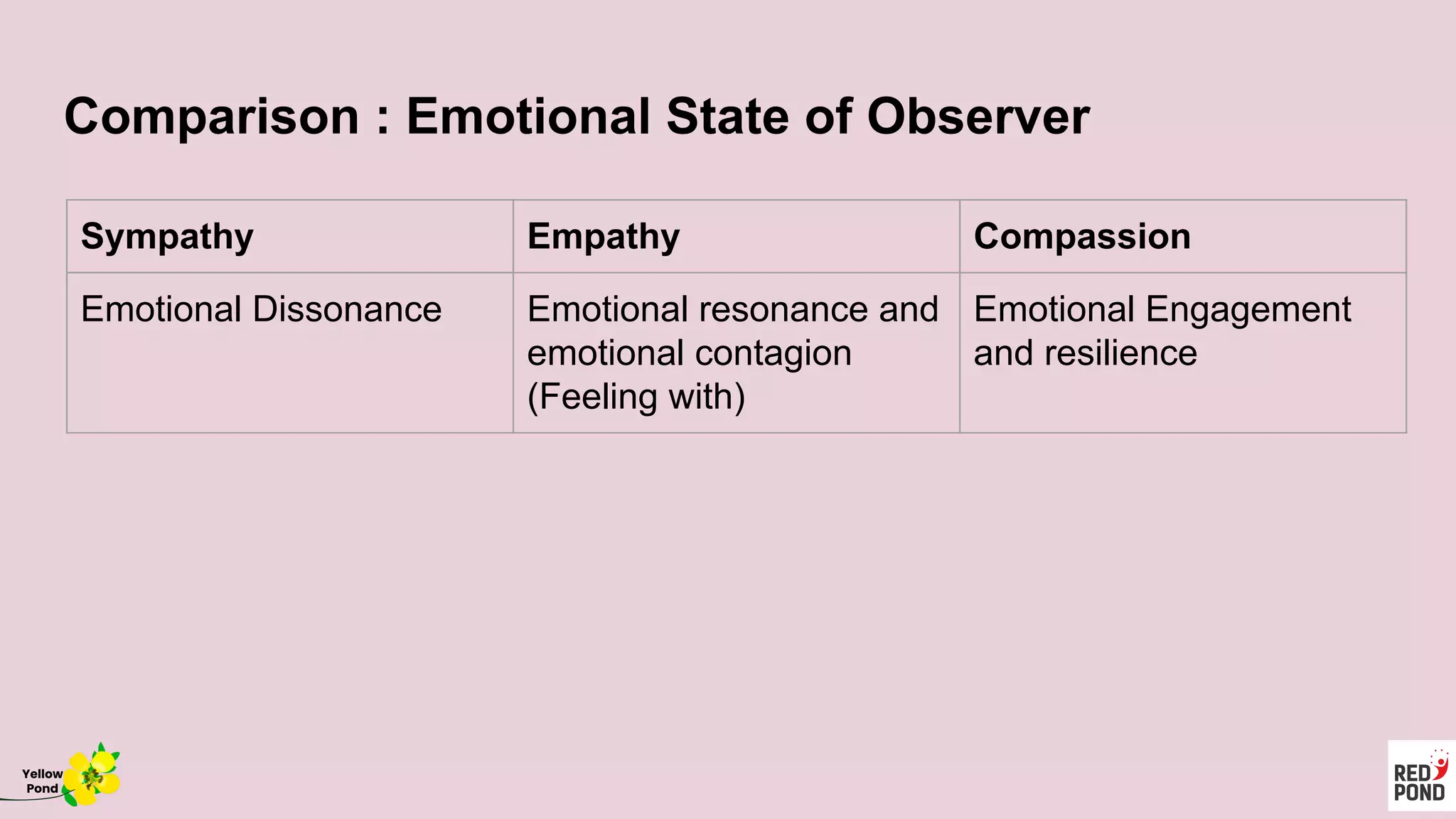The document provides an overview of the neuroscience perspective of compassion. It discusses how compassion is defined as a sensitivity to suffering coupled with a desire to alleviate it. Several brain areas are implicated in compassion, including the prefrontal cortex, anterior cingulate cortex, supramarginal gyrus, anterior insula, and amygdala. Practicing loving-kindness meditation can help train the brain in compassion by activating areas involved in reward and affiliation. Personal benefits of compassion include increased positive emotions and improved physical health.




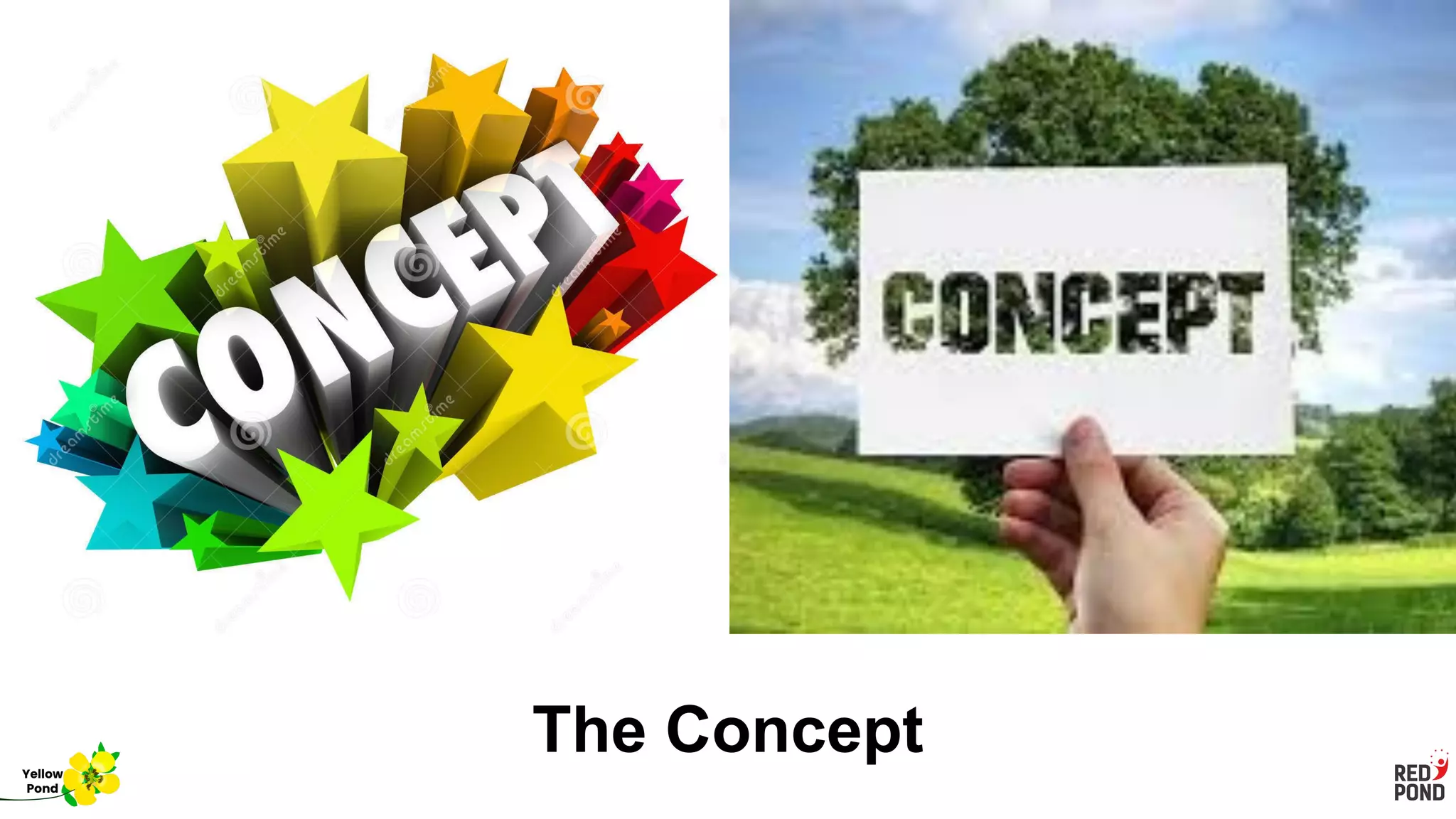






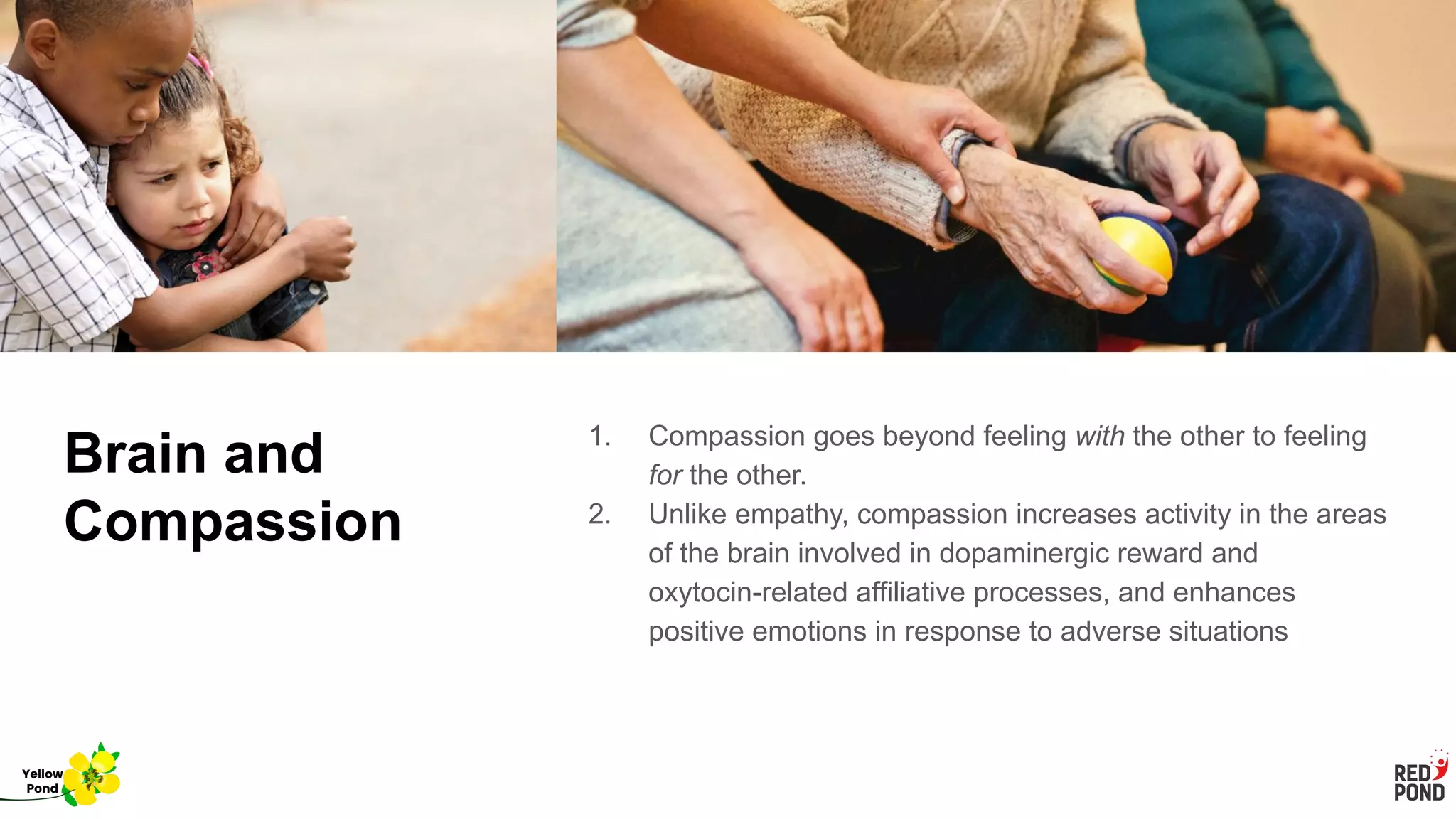

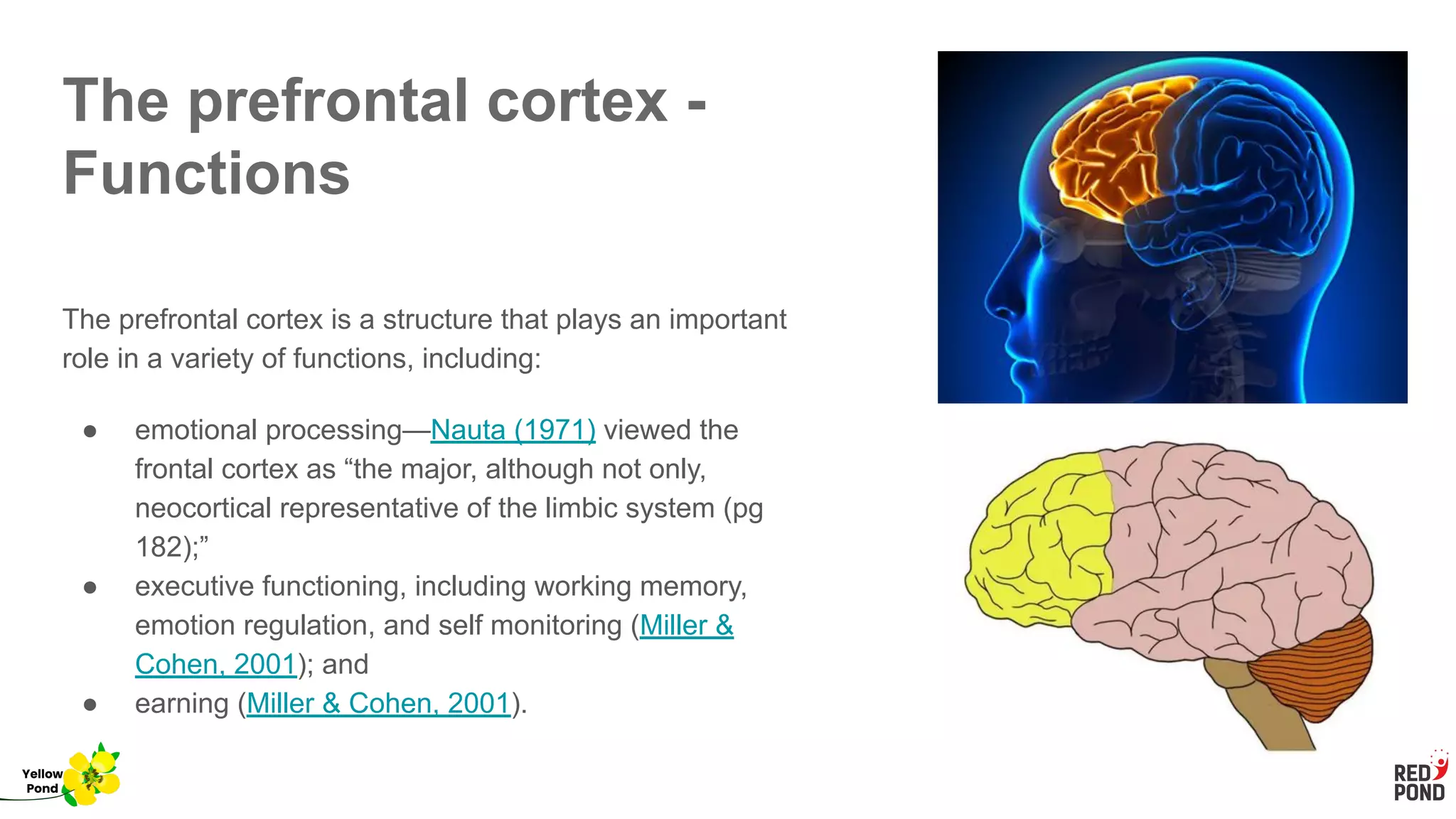
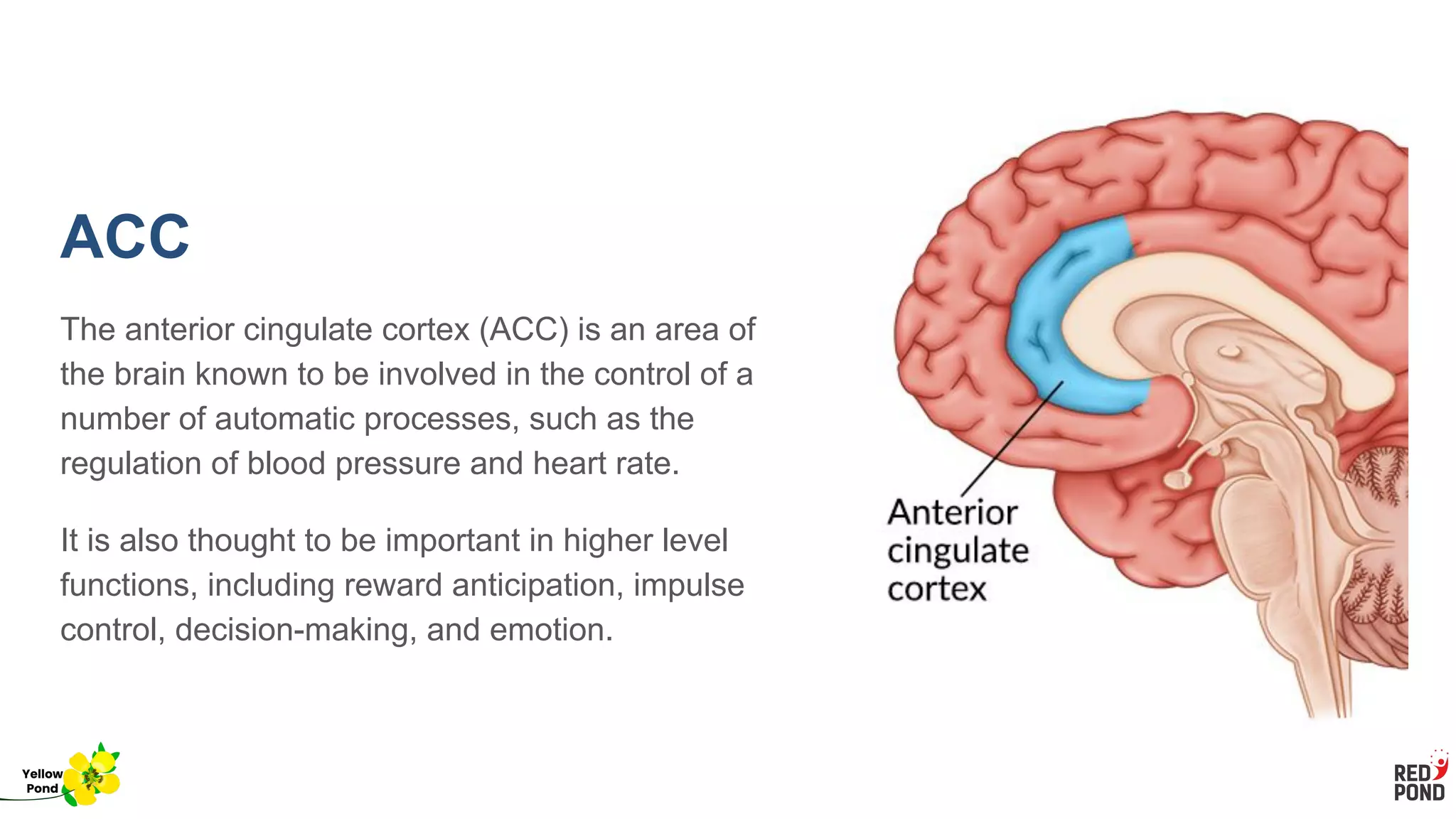
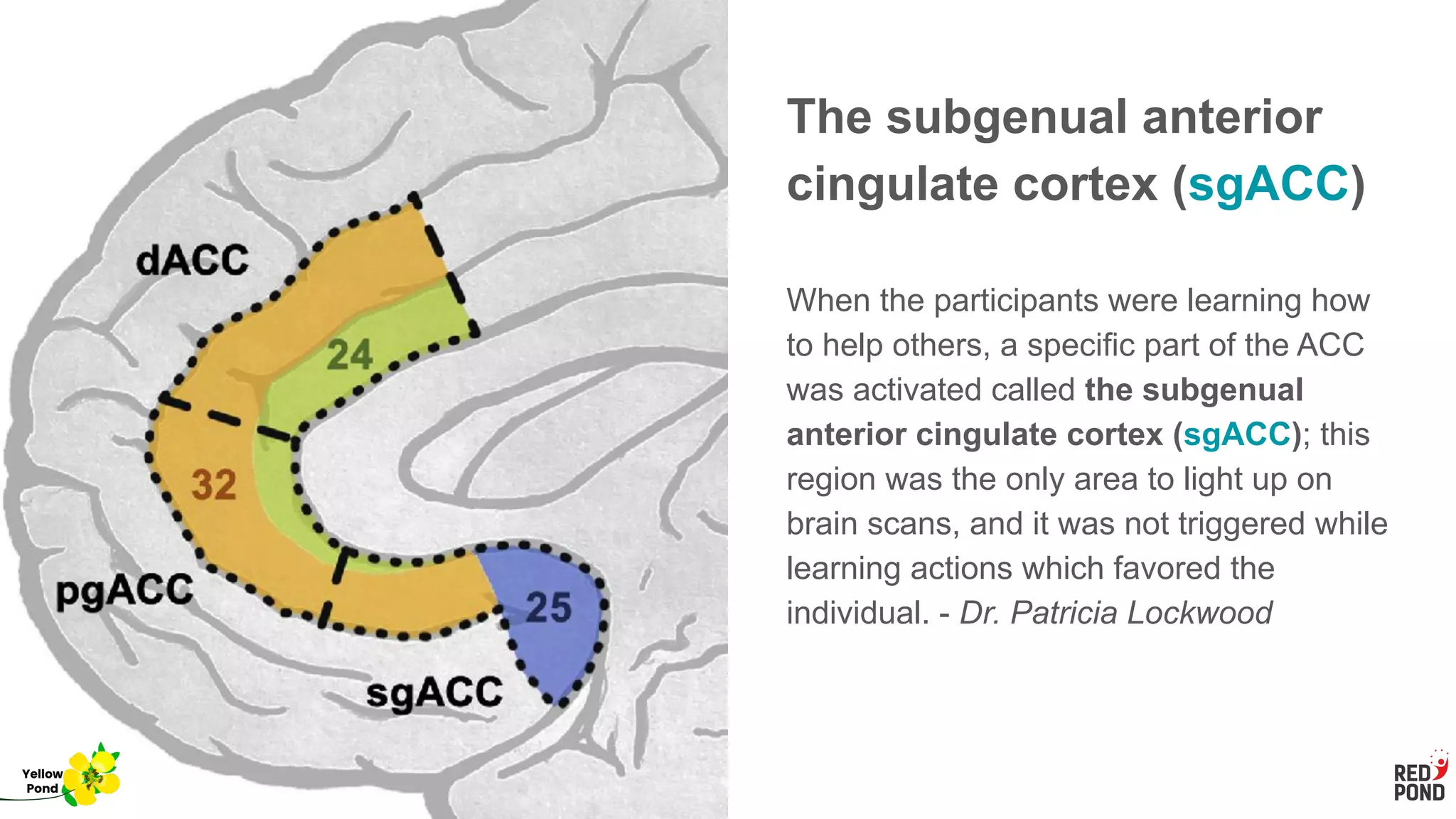
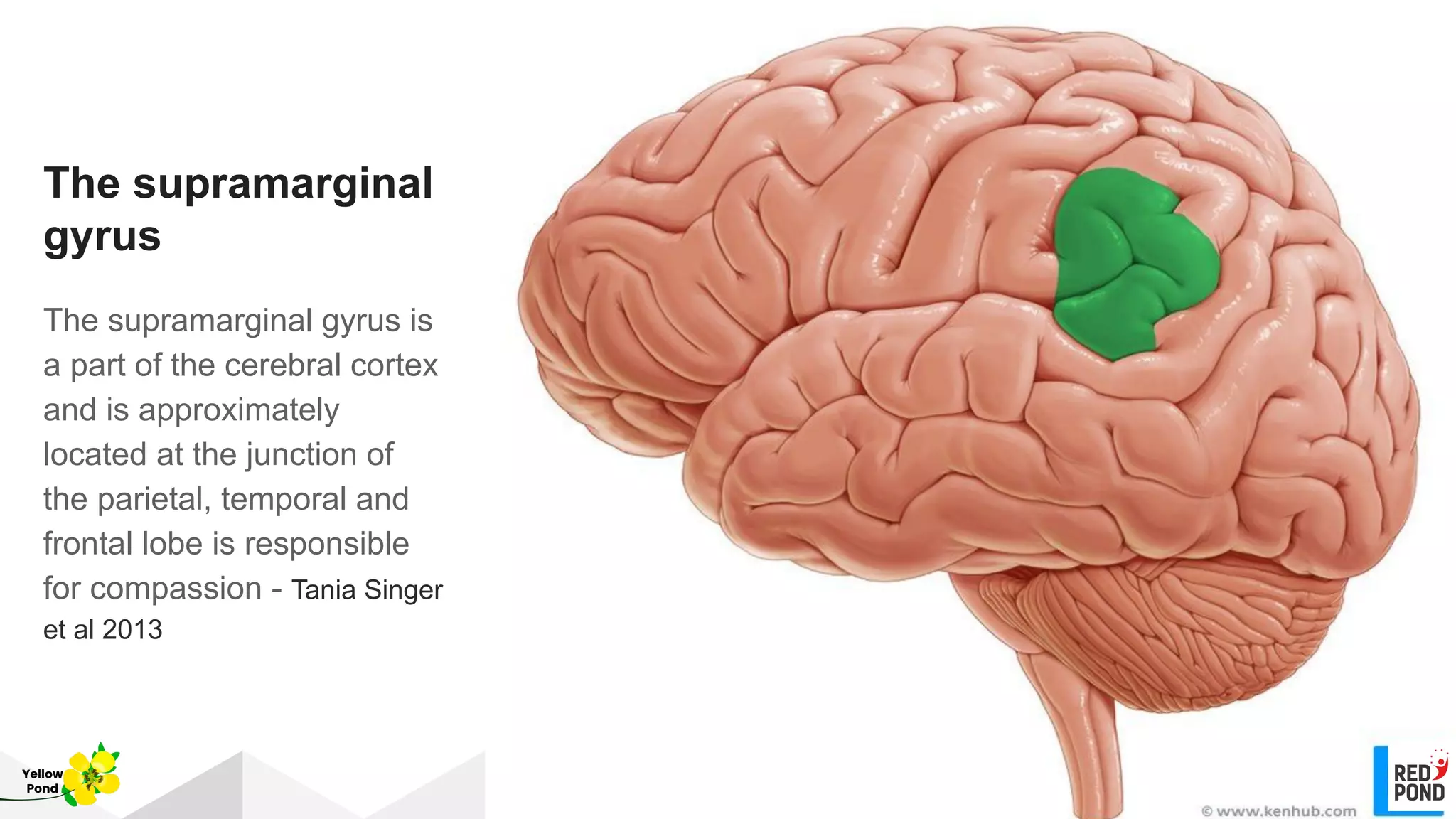

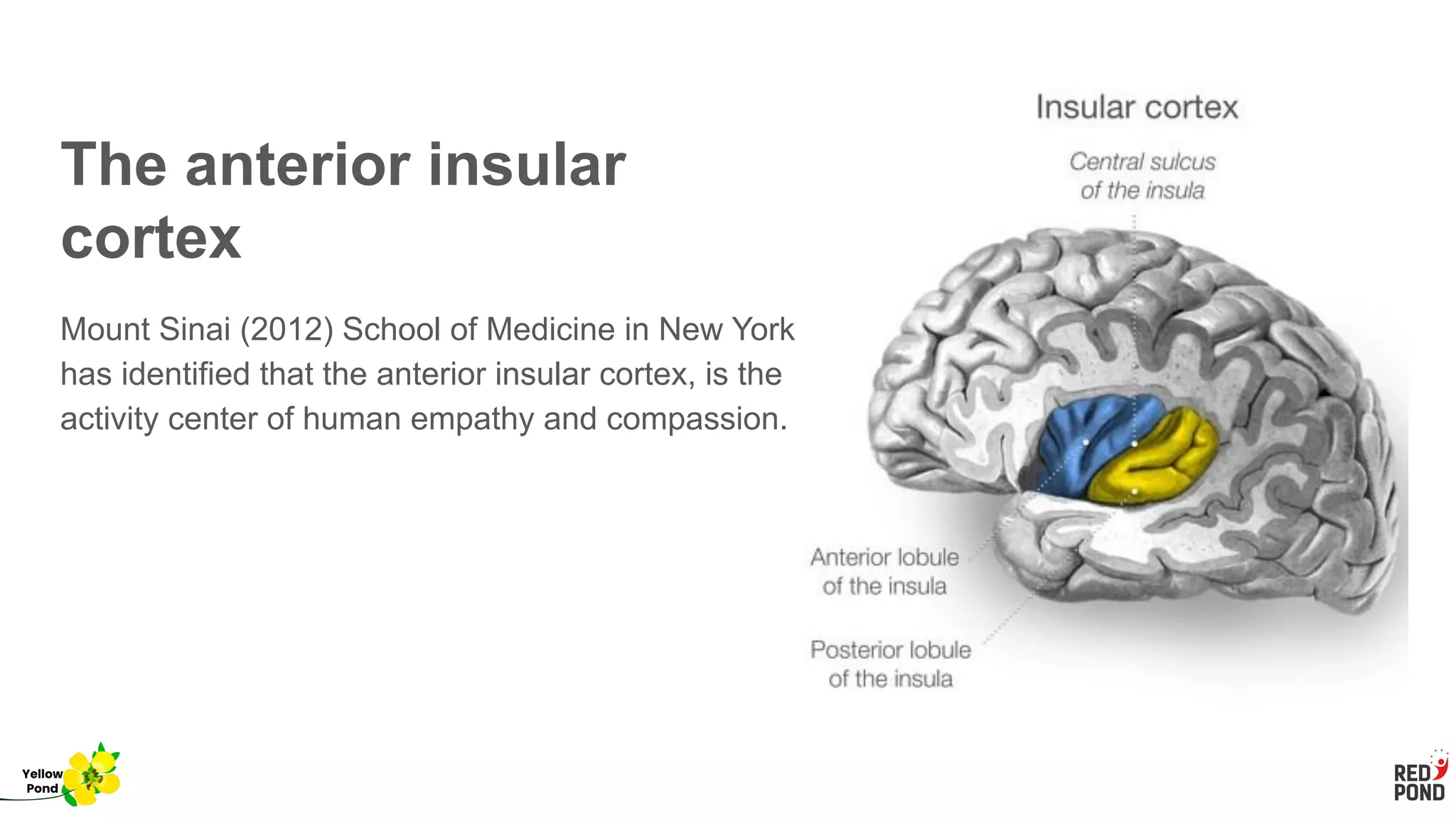
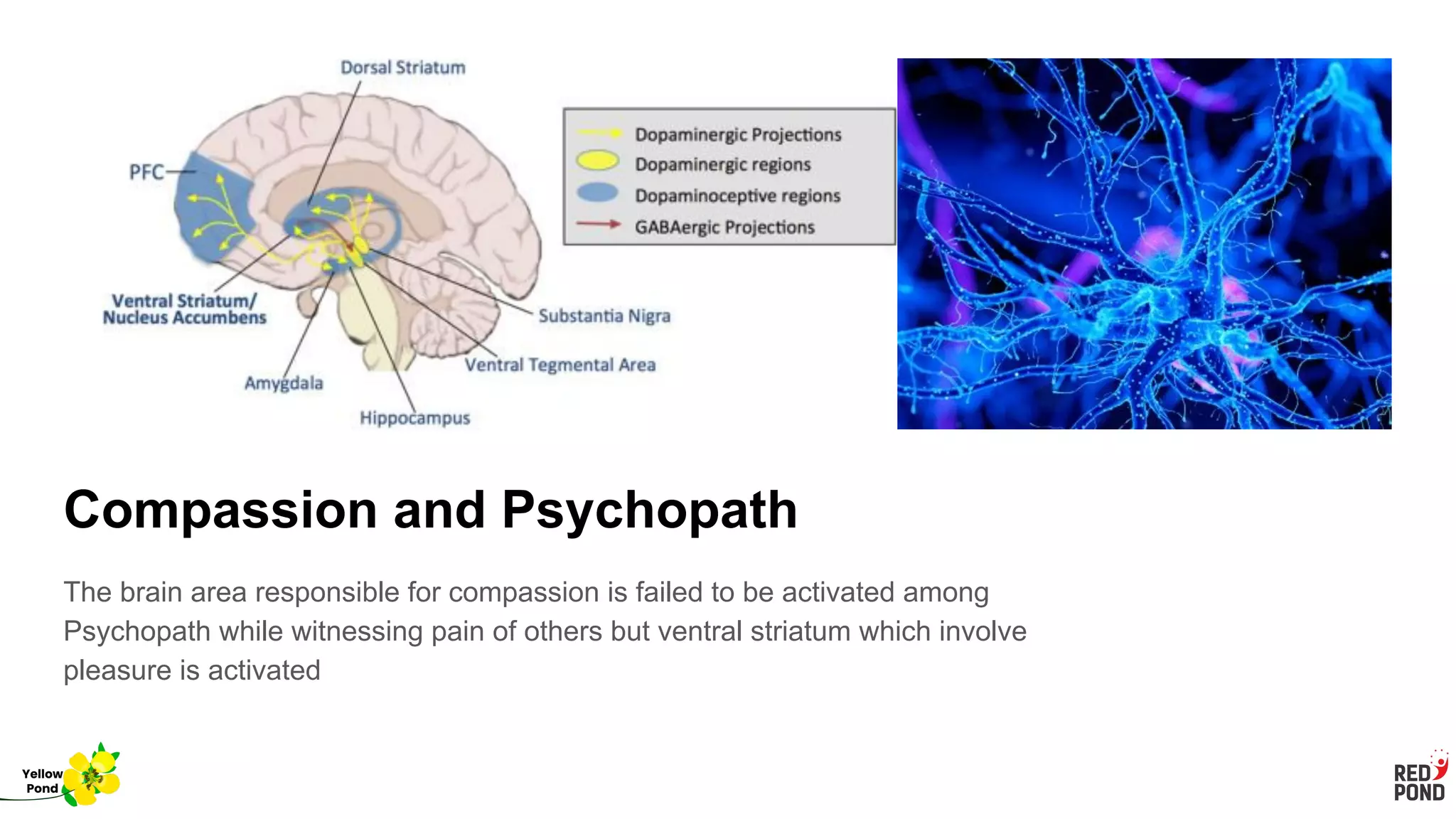





![Reference
1. Lila Liberman (2021). The Neuroscience of Compassion. https://uplift.love/the-neuroscience-of-compassion/
2. Toward a Neuroscience of Compassion. Available from:
https://www.researchgate.net/publication/305672507_Toward_a_Neuroscience_of_Compassion [accessed Nov 08 2021].
3. Aditi Subramaniam (June 6, 2020). Understanding the neuroscience of compassion.
https://www.deccanherald.com/opinion/understanding-the-neuroscience-of-compassion-846357.html
4. Neuroscience News (May 22, 2013). Brain Can Be Trained in Compassion.
https://neurosciencenews.com/neuroscience-brain-activity-compassion-training-153/
5. William Mobley (November 8, 2021). The Neurobiology of Compassion.
https://health.ucsd.edu/news/topics/compassion/qas/Pages/neurobiology.aspx
6. G. Chierchia, T. Singer, Chapter 20 - The Neuroscience of Compassion and Empathy and Their Link to Prosocial Motivation and Behavior,
Editor(s): Jean-Claude Dreher, Léon Tremblay, Decision Neuroscience, Academic Press, 2017, Pages 247-257, ISBN 9780128053089,
https://doi.org/10.1016/B978-0-12-805308-9.00020-8.
7. Kim, J.J., Parker, S.L., Doty, J.R. et al. Neurophysiological and behavioural markers of compassion. Sci Rep 10, 6789 (2020).
https://doi.org/10.1038/s41598-020-63846-3
8. Dowling T. (2018). Compassion does not fatigue!. The Canadian veterinary journal = La revue veterinaire canadienne, 59(7), 749–750.
https://www.ncbi.nlm.nih.gov/pmc/articles/PMC6005077/
9. Esch, T., & Stefano, G. B. (2011). The neurobiological link between compassion and love. Medical science monitor : international medical journal of
experimental and clinical research, 17(3), RA65–RA75. https://doi.org/10.12659/msm.881441
10. Chris Irons (2014). Compassion: Evolutionary understandings and the development of Compassion Focused Therapy (CFT).
https://www.rcpsych.ac.uk/docs/default-source/members/sigs/spirituality-spsig/spirituality-special-interest-group-publications-chris-irons-compassion-ev
olutionary-understandings-and-cft.pdf?sfvrsn=d23087fb_2
Yellow
Pond](https://image.slidesharecdn.com/neuroscienceperspectiveofcompassion-211126062743/75/Neuroscience-perspective-of-compassion-26-2048.jpg)



